Continuation – Part 24 of The Chemistry of Time
First, let us examine the accompaniment of the times with which we wish to compare to our own. We have identified some critical similarities in the placement of the outer planets and we can see their parallels in the world outside, but it is in the differences where we find the clues we need. To begin, here is a chart for Apr 17, 1861, a few days after things really took their turn in the United States Civil War.
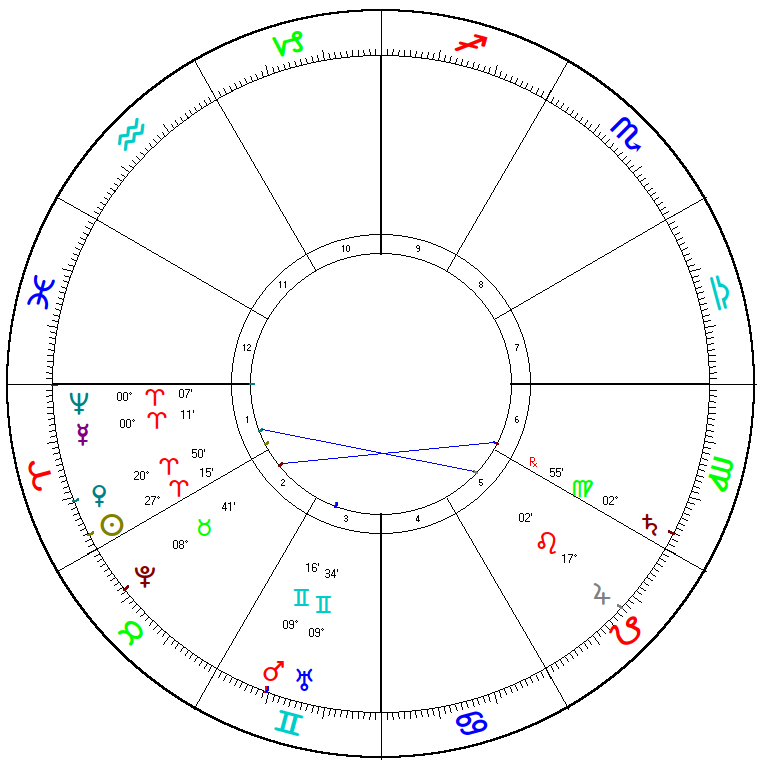
The first thing we can notice is that Mars is Conjunct Uranus, in Gemini. That is the repetition of the natal placement and speaks of conflict and separation. Mars takes two years to complete a cycle so this conjunction is somewhat uncommon, although it occurred once prior at 1 Gemini on April 27, 1859. This indicates to us that the conflicting ideas had been brewing in the country for sometime, with the disruptive period beginning fully two years prior. What has changed at this second conjunction of Mars and Uranus in Gemini is that Neptune has now entered Aries, the cardinal fire sign that is ruled by Mars. The other effect of Neptune changing signs is that it removes the interval between Neptune and Pluto in the following sign. Here is the chart with just the outer planets and Saturn:
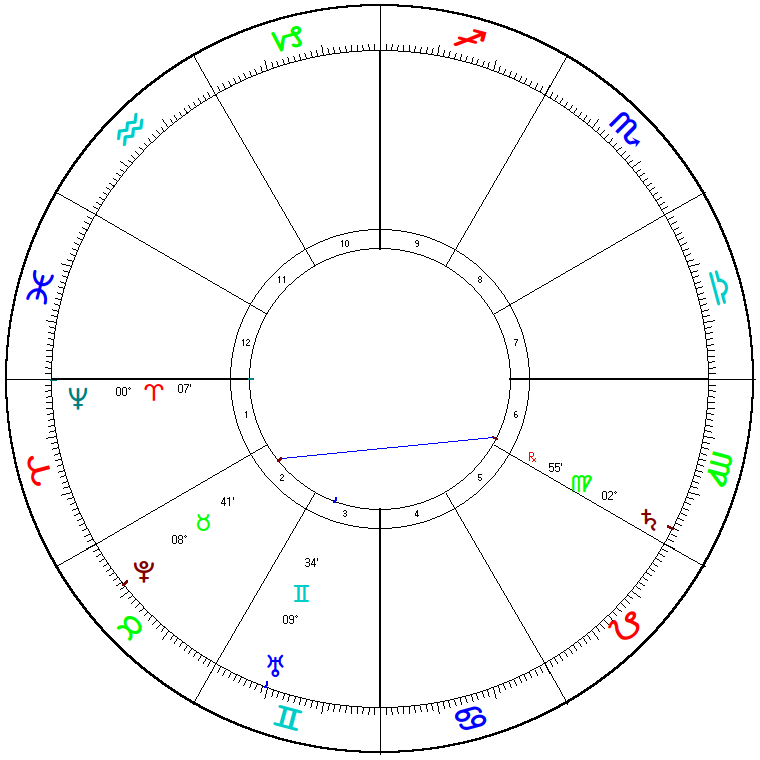
Looking at these as notes we see that there is first a muddying by Neptune in the sign of Aries, the fire-starter. It is followed immediately by Pluto in the earth sign of Taurus – ruling over land, territory, and value. Then it is followed immediately without pause by the disruptive ideas of Uranus in Gemini. We get two interval pauses and only then does Saturn in the earth sign of Virgo turn to discipline and the details. Consider that prior to meeting Uranus in Gemini to launch the fighting in April 1861, Mars first made aspect to Neptune and Pluto in the months leading up to that. Taken together this reads as a very combustible period of time where confusion of Neptune leads into the extreme forces of Pluto without a pause, which had been the case in the years immediately prior. The war that results is easy to classify as a stubborn conflict over rigid, fixed values, and land itself, explained by the presence of Pluto in Taurus. While the conflict is certainly ideological it is the immediate insertion of the Pluto in Taurus “note” that escalates things in the way we remember them. The Gemini component follows after the extreme concerns over property. Let us contrast that to the coming times:
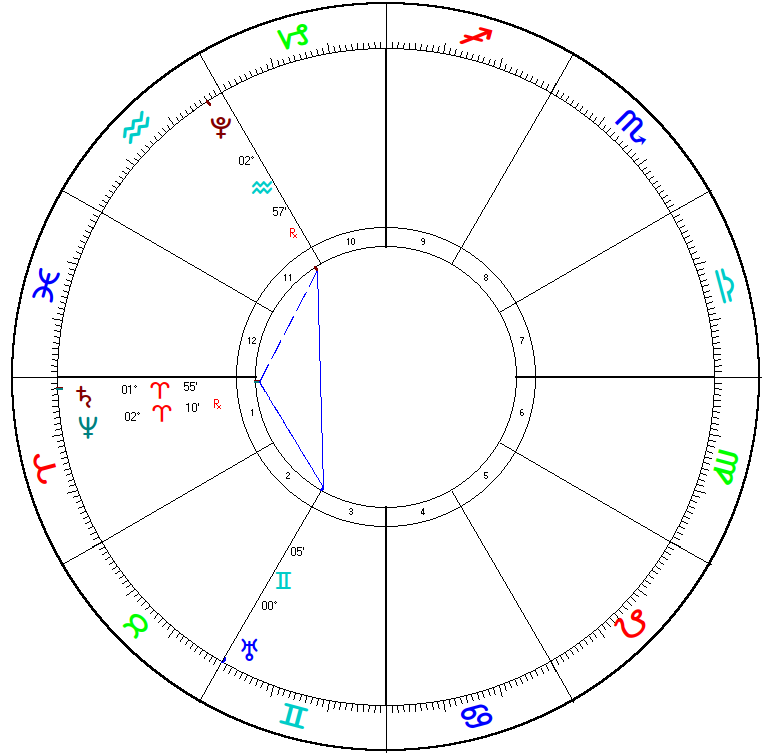
Here we see the configuration on July 9, 2025. Notably we have Pluto coming first in sequence in the Air sign of Aquarius, followed by an interval, then Saturn with Neptune in Aries, followed by another interval and then Uranus newly-entered into Gemini. This describes a very different pattern despite two of the placements being in the same zodiacal position as during the Civil War. Pluto in Aquarius is about the new rules and it begins the sequence. The conflict described here is about how to move forward and how to assemble the future. We begin with the extreme assertions of Pluto, followed by an interval that leads into a combination of Neptune and Saturn in the fire-staring sign of Aries. Saturn’s presence here restricts action and suggests limited active war-like conflict, at first. As time proceeds Saturn will quickly pass Neptune, suggesting that limited skirmish will increasingly erupt prior to being tamped-down by Saturn. As the next two and a half years proceed the gap between Neptune and Saturn will grow, increasing the length of time during which skirmishes can act in the unfocused and defuse manner suggested by Neptune’s presence. What we see described here is a dissolution caused by the extreme assertion of the new rules, eventually rationalized by the ideological disruptions of Gemini. The lack of Earth signs implies far less conflict on land and over property as compared to the 1860’s, while the heavy Air emphasis suggests a profound focus on the construction and parameters of the new system. This is the action of Pluto, which is in return for the first time.
The Pluto “return” is a critically important event in this chart and one of rare occurrence in general. Few institutions and States last for 248 years in a singular form as the United States has, so the historical comparisons are limited. The most salient of these is that of the Roman Republic, for which we have four Pluto cycles to study. Counting from a founding date of 509 BC we know that Rome’s natal chart has Pluto around 12 degrees of the sign of Leo. The first occurrence of a Pluto return for Rome is thus around the year 264 BC, which corresponds to the year when the Punic Wars began. This was a series of conflicts against the rival power in the Mediterranean region of Carthage, ultimately to determine who is to be the dominant Empire of the age. Rome emerges as the victor decades later and the result for Carthage is total destruction. This is the defining conflict of the Roman Republic era and its correspondence with the Pluto return illustrates the criticality of this transit. To underscore this, the following Pluto return for Rome occurs in the period of Augustus during which he is establishing Rome as the Empire and himself as Emperor.
The prominence of Pluto in Aquarius as the leading note in the sequence accompanying these coming times reinforces the importance of Pluto in general as an actor in the story. The presence of Pluto at the very beginning of Aquarius further underscores its importance, as that is the point where occurred the Great Conjunction of Jupiter and Saturn on December 21, 2020. This conjunction marked the start of the new two-hundred year Age of Aquarius, hearkening all of the way back to events of the year 1226. 1226 marks the period of the expansion of the Mongol Empire after power passed to the sons of Genghis Khan. This is the era in which the Eurasian-centered State integrated what is now China, Iran, and Korea under its authority. Can we find some parallels for today in those events?
The Pluto Return of the United States of America occurred on February 20, 2022 and occurs via retrograde twice more in that year, so it is the events in that year which tell us about the impacts of this configuration. Here is the USA chart in the inner circle, with the transits for the exact “retrograde” pass of Pluto over its natal position in July of 2022:
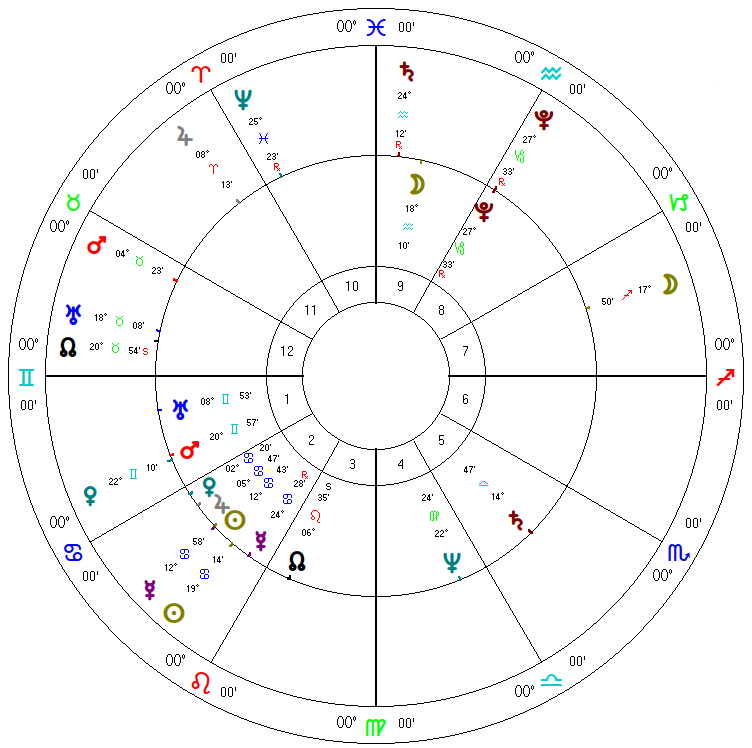
I should note that there are two things we have not covered in this series that now come into consideration. First is the “houses,” those sections with the numbers on the inner ring. These correspond to topics and will be discussed outside of this series. For now it is worth noting that the \”8th House,” where Pluto is located, refers to the topic of other people’s resources, which can lead directly to “money received from others.” The second point is that the precise time of the USA chart is not universally agreed upon and the most common one has Sagittarius as the rising position. That swaps the placement of Pluto into the “2nd House,” which covers the opposite end of the same topic. The 2nd house is said to refer to what you can do on your own or more commonly your resources and money. In the case of either sign being on the rising the topic of financial matters remains key to the position of Pluto. Regardless Pluto is certainly in the sign of Capricorn, showing extreme ability in the area of rules, structures, and achieving according to the rules of the system. Pluto topically by house relates either to the ability of the US to extract its own resources via rules, or the resources of others, and the distinction between the two is relatively unimportant for this discussion. Contrast this to our example of Rome, which has Pluto in Leo. In Leo, Pluto is much more prideful and the conflict with Carthage arising at Rome’s first Pluto return is historically seen in this context. The battle between the two states was about who would be the supreme and dominant ruler of the region and for Rome this was made paramount when Pluto returned to the Leo position. Carthage was challenging Rome’s sense of primacy and Rome’s response to that was to pursue dominance via war. What has been the USA’s response to a challenge to Pluto?
In the years leading up to February 2022 the United States came to refer to its de facto global Empire as the “rules-based world order” and I can’t imagine anything more Capricorn if I’m being honest. It enforced this order via a combination of military, financial, and cultural measures which required increasing compliance and cooperation from the other States of the world. Despite a widespread lack of interest in these rules in much of the world the overwhelming power of the USA prevented any direct challenge to this. That changed in late February 2022 at the very return to Pluto’s Capricorn placement in the USA’s chart, when Russia chose to directly defy the edict of the “rules-based order” and pursue its own interests instead over matters in the country of Ukraine. While an intense military conflict has continued since then, with the United States contributing enormously both militarily and financially to the side opposing Russia, it is the events of Spring 2022 which are most relevant.
In order to enforce Russia’s adherence to the rules of the day, the United States along with the bulk of its global vassals imposed an enormous and unprecedented “financial sanctions regime” upon the Russian state. This covered an enormous array of industrial, business, travel, monetary, and other matters. The intent and expectation is that these restrictions to financial operations and mobility would force Russia to change its political and military behavior. It was even anticipated that such actions would crush the financial structures of Russia itself, leading to governmental collapse and eventual fragmentation of the thousand-year old Russian state. The United States was able to enact such measures via its dominance of the world financial system, as this is the core component of its power and that which it reinforces via its military. In doing so the United States took measures far beyond those which it had used in previous conflicts with uncooperative states and effectively risked the entire financial system’s integrity in doing so. This was of no great concern to the leadership of the United States because Russia was seen to be a weak financial player and in no way able to withstand such a nuclear option in the financial realm. Unfortunately for the Americans, this turned out to be otherwise.
By the time of our July 2022 retrograde Pluto transit depicted above it was clear that the Russian state was in fact entirely capable of withstanding the economic and financial warfare being conducted by the United States and the half of the world under its direct employ. Two years beyond that time it is clear that Russia has not only withstood the financial offensive but is actually thriving as a result, owing to a slew of factors not least of which being its partnerships with China, Iran, India, Turkey, the Arab states, and North Korea. Additionally it is succeeding in the military conflict which initiated the challenge to the USA, with the end of that conflict now in sight and a total Russian victory seemingly inevitable. Should Russia achieve military victory there will be no recourse for the United States to restore it to the “rules-based order” which is now in effect dissolving in real time as the Russian conflict carries on. The final end of the conflict ensures a dramatic moment of acceptance for this reality, thus far largely denied within the regions directly controlled by the USA.
At the root of this conflict is the concept of “unipolarity” and “multi-polarity.” The operative mode for the United States for decades has been that of a single dominant power in the world – the unipole itself! In recent years however the emerging Eurasian states have coalesced instead around a concept of “multi-polarity” wherein no single state has universal dominance or authority and instead the large regional powers manage their affairs independently according to their own needs. The greatest proponents of this have been China and Russia, who have formed a powerful partnership in pursuit of this new organizing principal for the states of the world. The United States meanwhile resists this in a variety of means military, financial, and cultural. This challenge is clearly the Pluto return in Capricorn – the setter and enforcer of rules – for the American state. While it is possible that this conflict will take on multiple stages and stretch out over decades as occurred between Carthage and Rome, the nature of Capricorn suggests otherwise. Saturn is the ruler of Capricorn but it is also the ruler of the following sign of Aquarius. In Capricorn the rules are enforced but it is in Aquarius that the new rules are created. This challenge to American unipolar world dominance is a catlyst for the creation of a new world system, operating under new rules. The essence of Pluto in Aquarius, and the Age of Aquarius itself, is to build upon that. For this reason it is extremely unlikely that the United States will be able to restore the previous, Capricorn-based rules, even if it manages some degree of victory over the Russian challenge or returns for another round in later years.
With this understanding of the role played by Pluto for the United States it is worth revisiting the chart from above, of July 9, 2025:
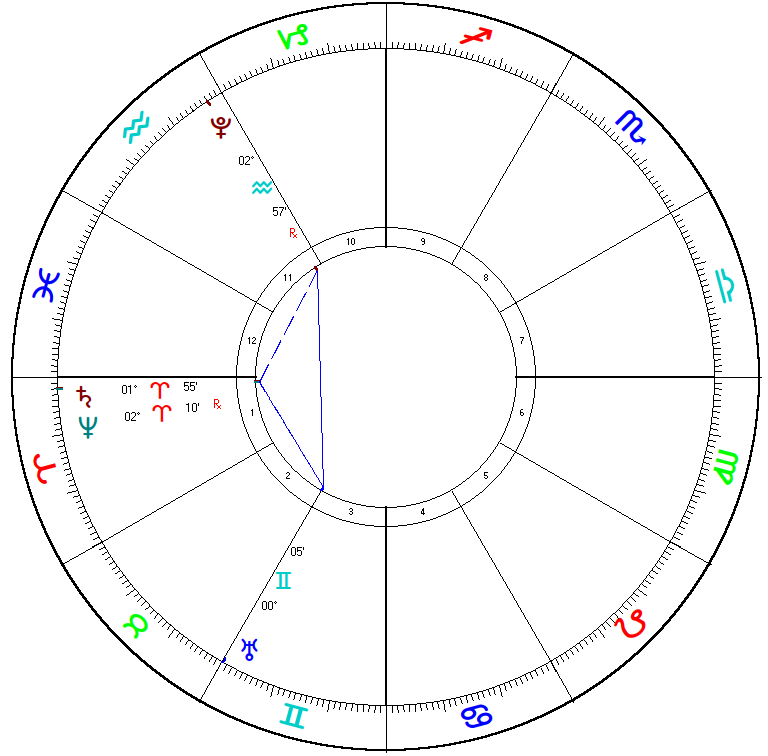
What we see is a sequence that begins with Pluto in Aquarius. The initiating challenge for this coming period is an extreme disruption the rules and the need to identify and impose new rules. This strongly implies what already appears quite likely – that the United States will not succeed in restoring the “rules-based world order,” particularly the financial component upon which it is most dependent. This will inevitably lead to domestic consequences in the core State because what is occurring is a dramatic reduction in the size of the financial Empire, if not complete dissolution of it within a few short years. It is this which replaces the conflict over land and property illustrated by Pluto in Taurus during the 1861 American internal dispute.
The coming years for the United States indicate extreme challenges and disputes internally regarding how to construct the new rules of the system after suffering external defeat. While heavy land-based warfare does not appear likely there is a plethora of air and fire in the chart, suggesting that the drone warfare which has emerged in the Ukrainian conflict is likely to play a significant role. Further we can expect information war to be rampant, particularly with Neptune – the planet which obscures – in the sign of Aries, ruled by the planet of war. Finally we have the matter of Uranus in Gemini, which corresponds with disruption to the identity of the country of the United States. Gemini is the sign of the twins and classically results in multiples. As it is the final note in the sequence of the dark luminaries it is likely that this represents the final, resolved state of the matter brought on by Pluto in Aquarius. As a result we are compelled to expect a fracture in the political boundaries of the United States and an outcome resulting in at least two but possibly multiple additional states on the former territory. Notably Saturn will transit into Taurus, ruling over value, finances, and property, suggesting a defining of boundaries around financial and territorial topics beginning in the middle of 2028.
All together what we have here is something like the story of a successful family living an orderly and ambitious Capricorn way of life, which is rocked by excessive, Pluto-fueled events which force the need to develop a new model for operating within the family. Confusion reigns and skirmishes result, steadily growing in animosity, size and severity. Ultimately the issue is resolved by a new model wherein there are two or more roofs with differing ideological basis under which the (former) family lives. It is an ugly divorce, remembered badly by the kids, and in later years understood to have been caused by someone acting in an underhanded and dishonest manner while overplaying and abusing their authority.
Elsewhere, a new Pax Mongolia.

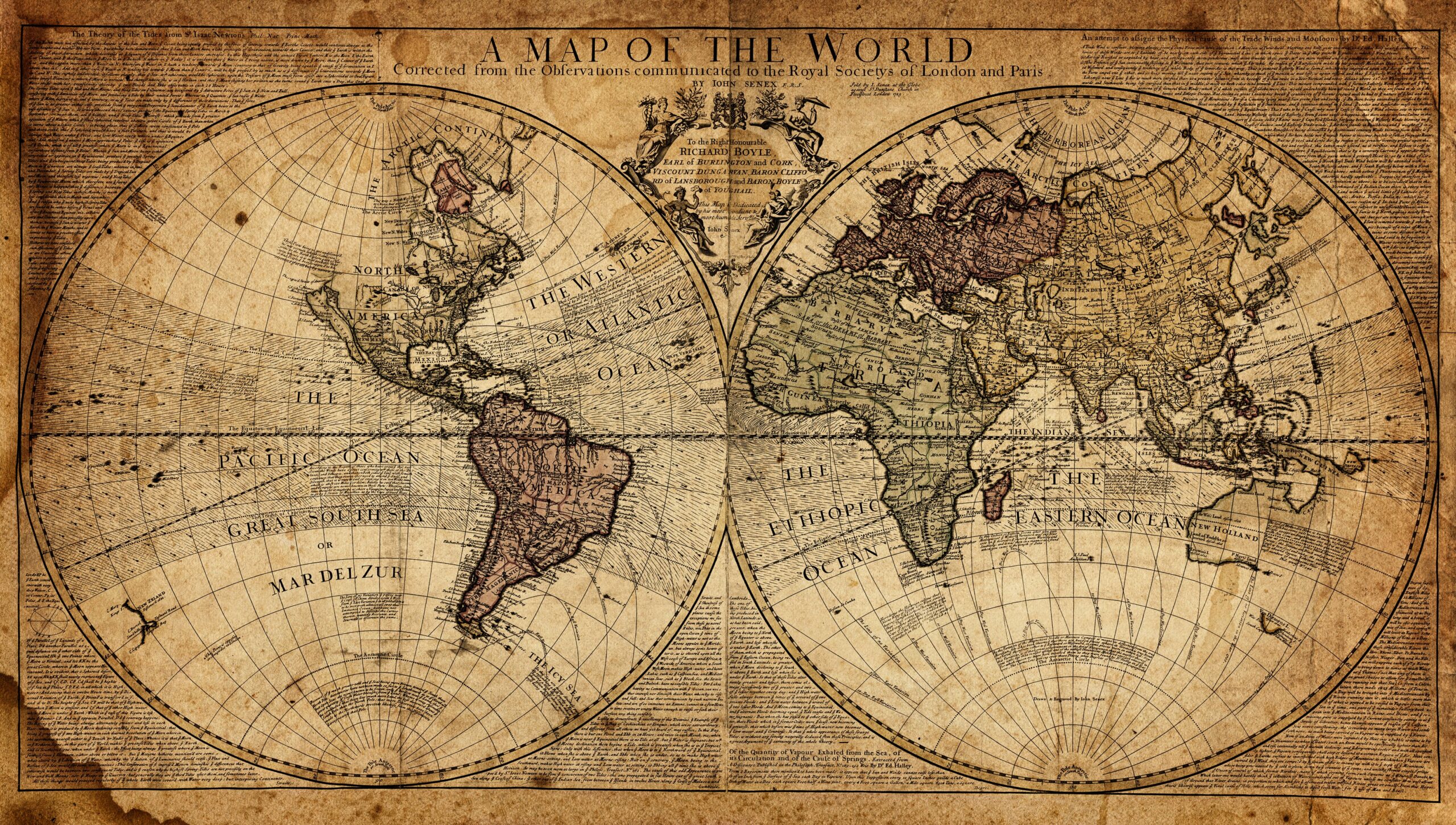
Leave a Reply